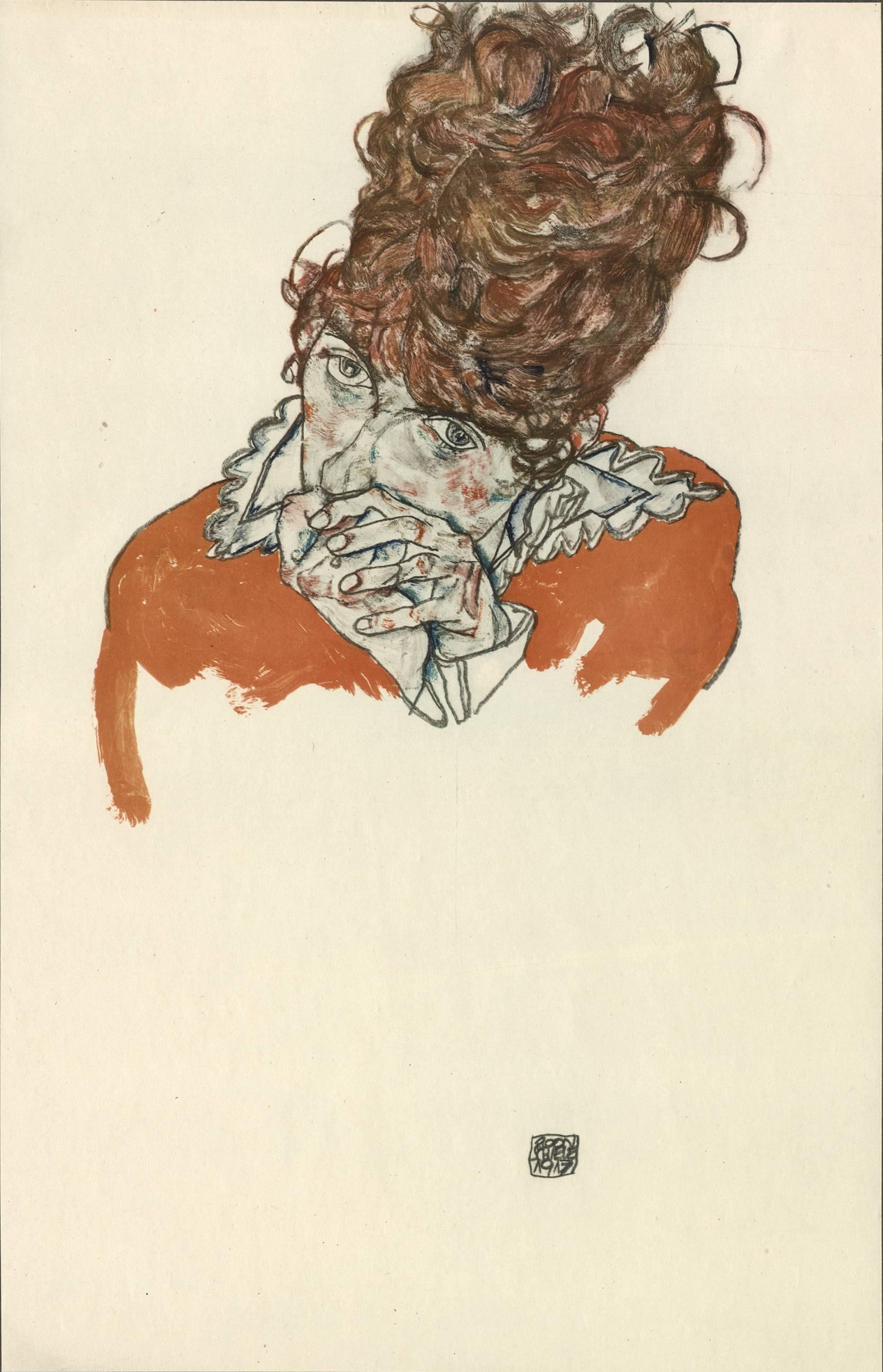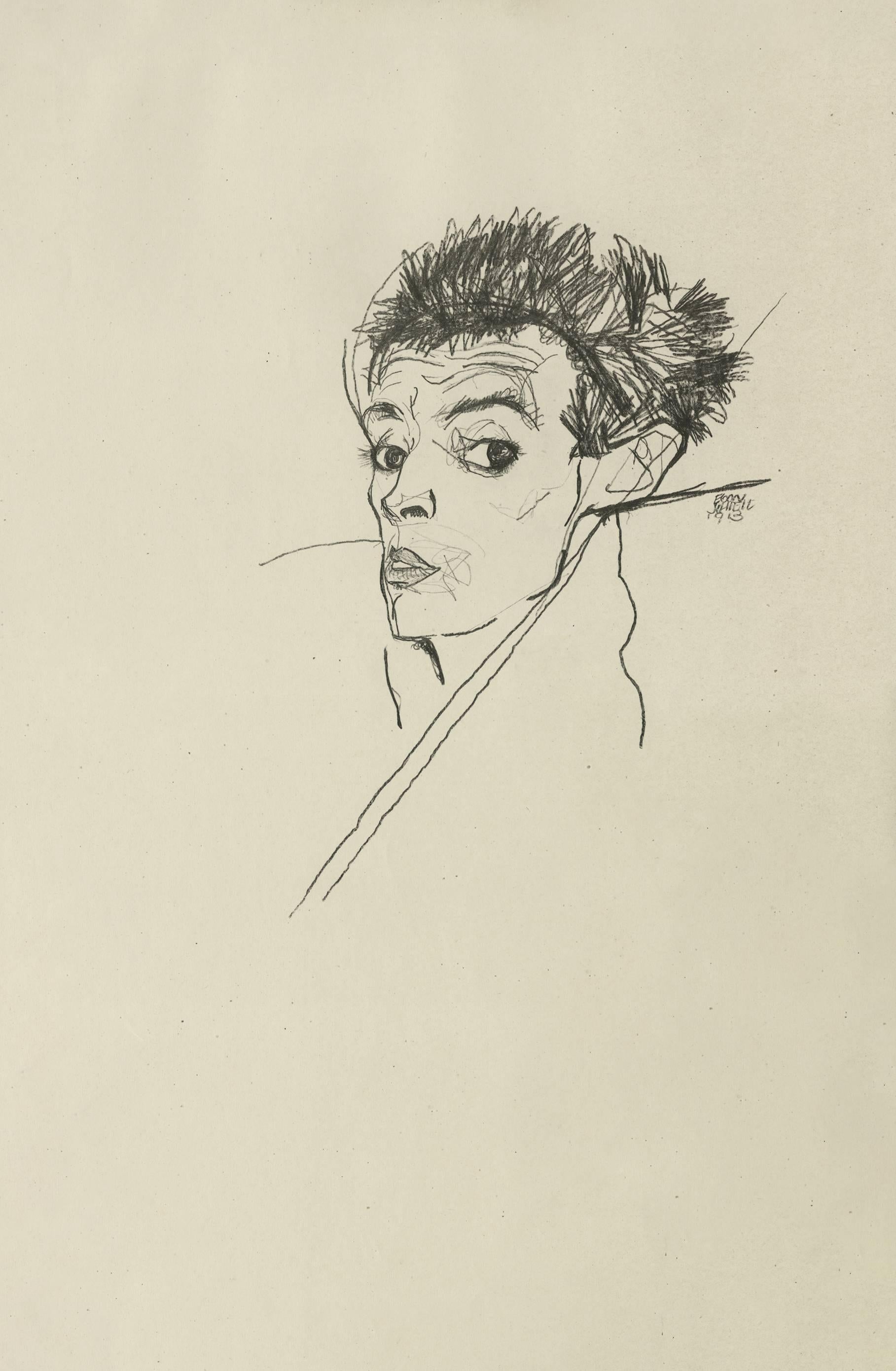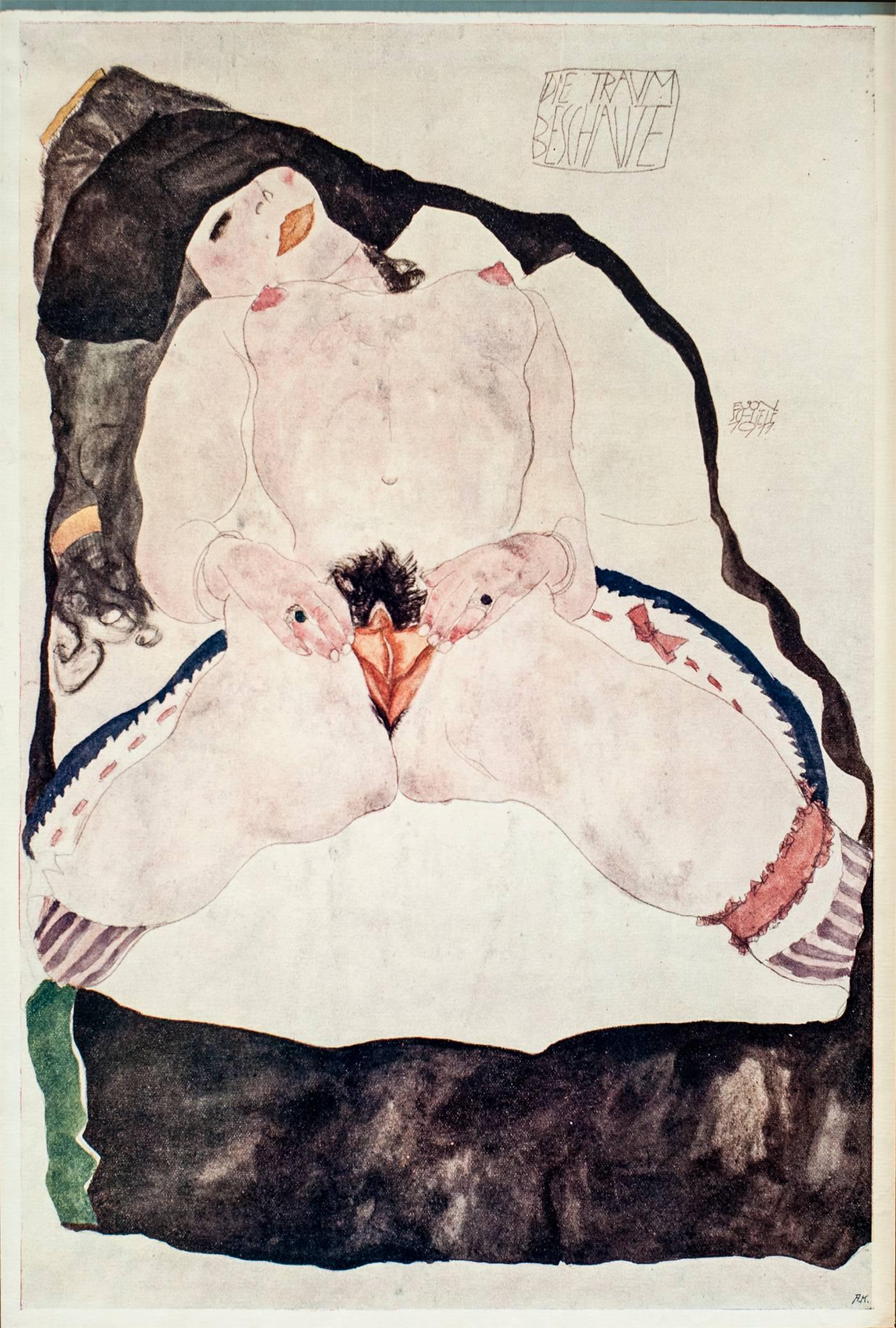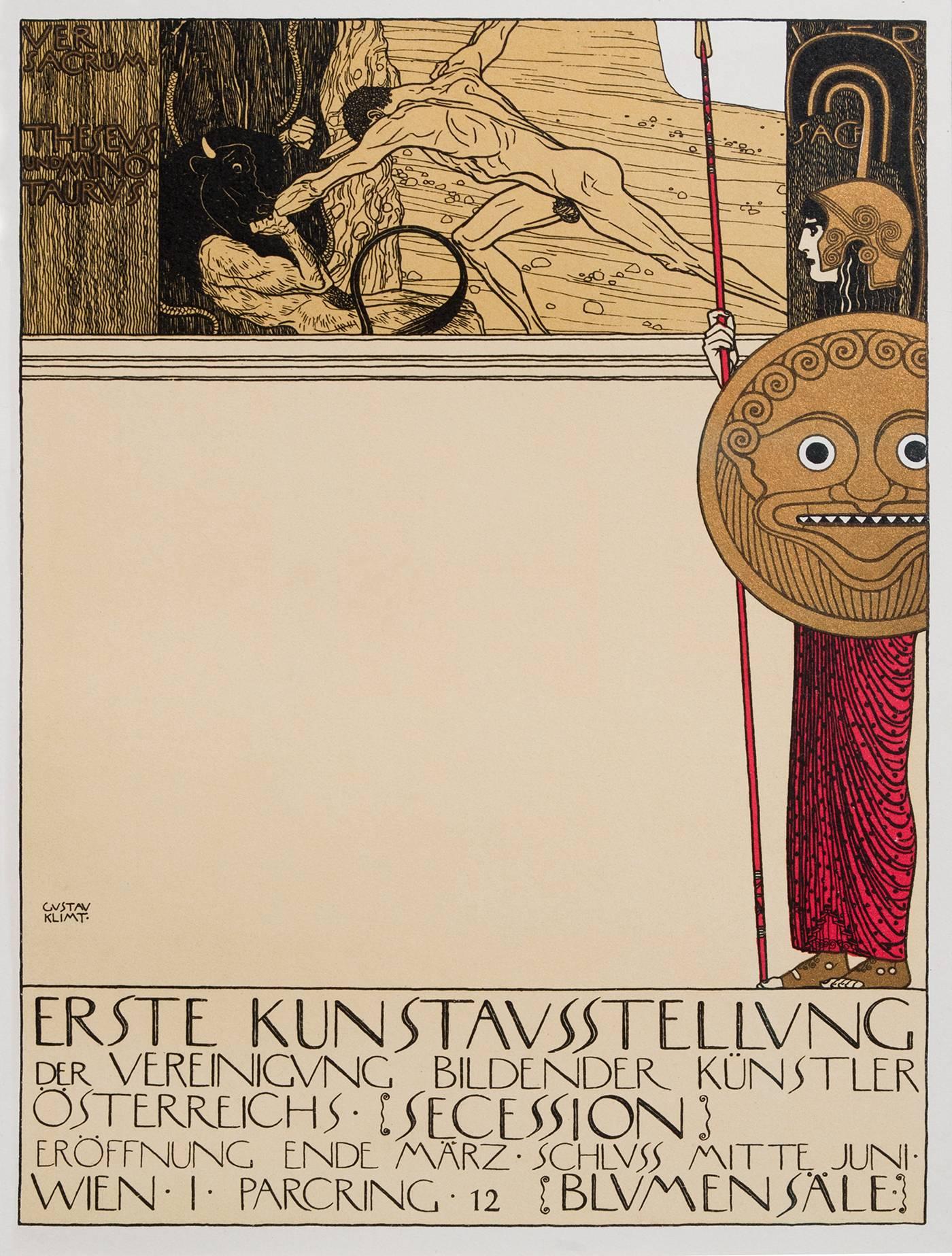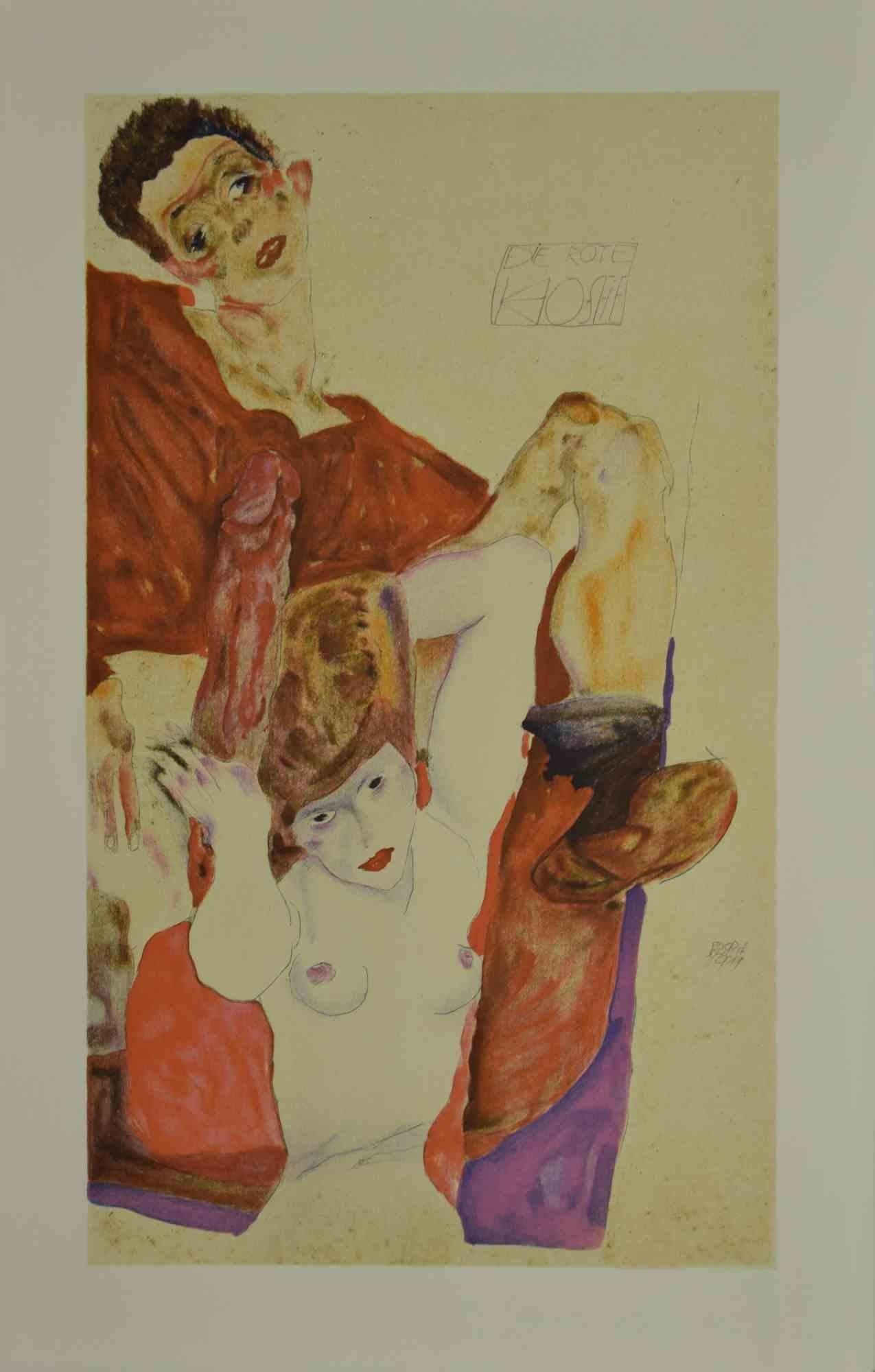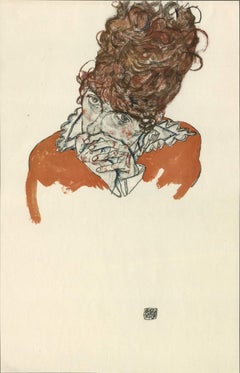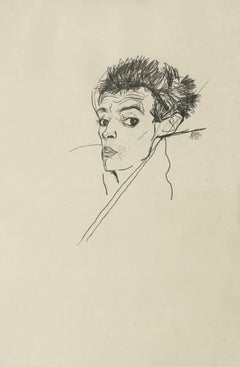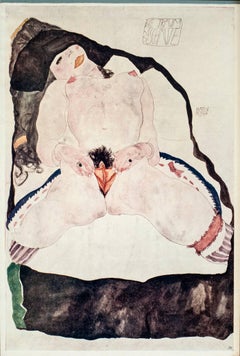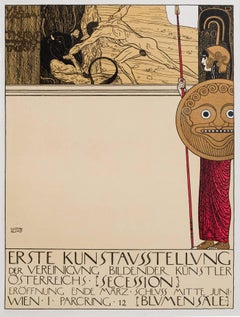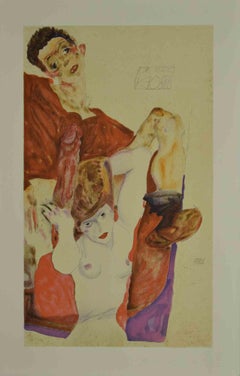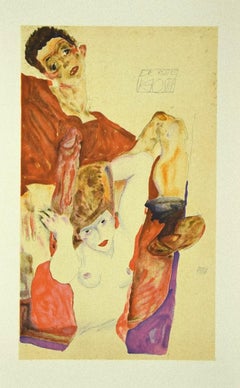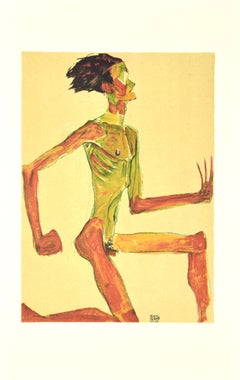Egon SchieleOttokar Mascha Folio, plate 18: "Shaw Oder Die Ironie Poster" by Egon Schiele1915
1915
About the Item
- Creator:Egon Schiele (1890-1918, Austrian)
- Creation Year:1915
- Dimensions:Height: 15.25 in (38.74 cm)Width: 11.5 in (29.21 cm)
- Medium:
- Movement & Style:
- Period:
- Condition:
- Gallery Location:Chicago, IL
- Reference Number:1stDibs: LU467314042652
Egon Schiele
Defiantly iconoclastic in life and art, Egon Schiele is esteemed for his masterful draftsmanship and precocious insight into the human condition.
Part of the first wave of Austrian modernism, Schiele was swept away by the Viennese fascination with the tension between Life and Death (known in the works of Freud and his later interpreters as Eros and Thanatos). Life, identified with attraction, love, sexuality, and reproduction, and Death, represented by distortion, disease, repulsion, and hysteria, often appeared in the same composition, thereby suggesting the frightening life cycle of the human mind and body.
Young throughout his career, Schiele universalized his childhood traumas, thriving libido, insecurities, fears, and longings. His contorted line, jarring contrasts, and flat areas of color, demonstrate an early alliance with Expressionist philosophy and artists who were relentlessly frustrated by conventionality in all its forms.
Schiele’s work embodied man’s disorientation and confusion in a seemingly absurd world, a world plagued by disease and war. It continues to be astonishingly relevant today, not just because it helped define modernism but also because it revealed the dark and immutable aspects of the human condition. As Schiele said, “Art is primordially eternal.”
Find Egon Schiele art for sale on 1stDibs.
(Biography provided by Galerie Fledermaus)
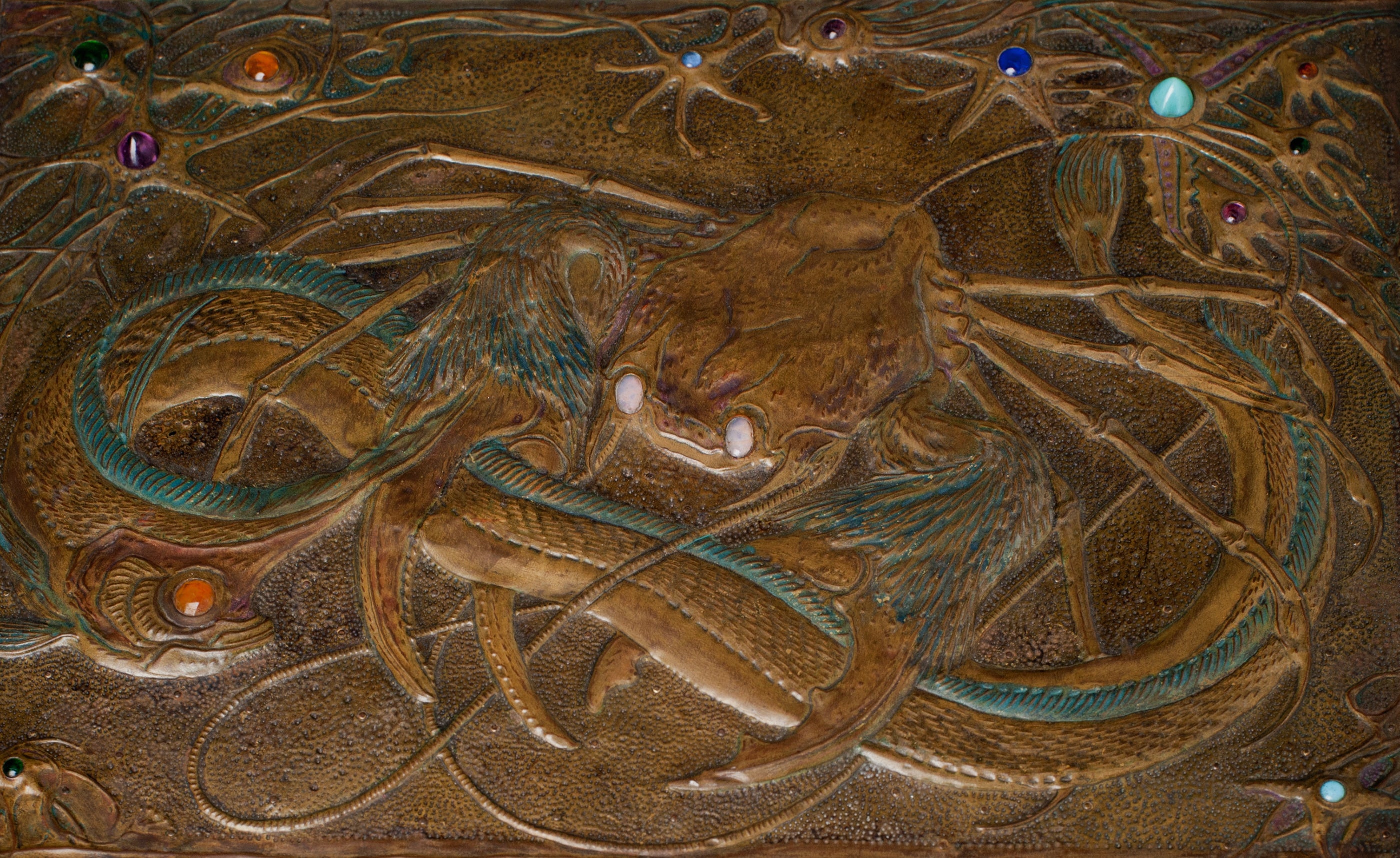
- ShippingRetrieving quote...Shipping from: Chicago, IL
- Return Policy
More From This Seller
View All1920s Vienna Secession Figurative Prints
Paper
1920s Vienna Secession Portrait Prints
Paper
1920s Vienna Secession Figurative Prints
Paper
1910s Vienna Secession Figurative Prints
Lithograph
1910s Vienna Secession Figurative Prints
Paper
1920s Vienna Secession Figurative Prints
Paper
You May Also Like
Early 2000s Modern Portrait Prints
Lithograph
1910s Modern Nude Prints
Lithograph
Early 2000s Modern Nude Prints
Lithograph
Early 2000s Modern Nude Prints
Lithograph
Early 2000s Modern Nude Prints
Lithograph
Early 2000s Modern Nude Prints
Lithograph
